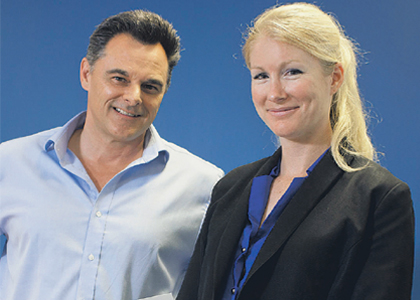

RETAINING female fly-in, fly-out workers isn’t as simple as offering flexible rosters, with new research showing positive relationships with managers and opportunities for social interaction are of paramount importance.
A survey of more than 1,300 employees on FIFO contracts has highlighted key differences between men and women in what influences their commitment to the job.
Not surprisingly the research, undertaken by market research company The Right Group, has found remuneration to be a key factor determining employees’ engagement and commitment levels.
Remuneration was of equal importance to men and women, but a difference was how satisfied each gender was with their salary.
Women in FIFO roles were generally found to be more satisfied with their pay than men, despite a gender pay gap of about 26 per cent.
However in women’s eyes, money was not the most important factor determining their commitment to a FIFO job.
Instead it was their relationship with immediate managers; how positive or supportive women found that relationship was the most influential of all factors determining commitment.
In comparison, perceptions of senior leaders were higher on the list for men.
The Right Group research project leader Alexandra Wells told WA Business News the finding indicated that having supportive immediate managers could help women feel more comfortable and engaged in the traditionally male-dominated FIFO environment.
“Companies with FIFO workforces would do well to monitor (these) relationships between employees of either gender ... however it may be worth paying even closer attention to how females and their managers in particular are getting along,” Dr Wells said.
Of all the factors related to living on-site, the opportunity for social interaction had more impact on women than it did men, the survey found.
“We also found that females rated the opportunities for social interaction on site as significantly worse than males did; it appears that females’ needs for social interaction on site may be higher than males, but those needs aren’t being met,” Dr Wells said.
The Right Group executive director Anthony loy said despite sites having improved in recent years, his experience in focus groups with FIFO employees suggested most of the improvements had involved the provision of facilities such as ensuite rooms, and health and fitness opportunities.
“There has potentially been a gap in the provision of more social aspects; rather than focusing on facilities, there appears to be a need for improving social opportunities for females specifically,” he said.
However, general manager of Barrick Gold Corporation’s Granny Smith mine, Julie Shuttleworth, said she’d seen little difference in the needs of men and women during her 12 years in FIFO roles.
“Social interaction is important regardless of your gender and at many FIFO operations there are opportunities to relax and socially interact with your workmates,” she said.
While Ms Shuttleworth said having a good relationship with immediate managers was important for both men and women, its higher importance for women could be due to an ingrained gender difference.
“Maybe it’s because women like to get along with people, like positive relationships and in general don’t like hostility,” she said.
“(But) I don’t think that females want to be treated any differently on site, they just want to get on and do the job.”
During the past year the pay gap between men and women has increased - from about 21 per cent in 2011 to 26 per cent this year - but it evidently hadn’t impacted on the level of female satisfaction with pay, according to The Right Group’s research.
Mining manager at consultancy Momentum Partners and founder of Women in Mining WA, Sabina Shugg, said it was precisely women’s contentment with lower pay that is working against improvements in pay equity.
“There’s lots of research showing that women will be more grateful for getting a job and more grateful for getting paid, which is why there’s a gender pay gap,” she said.
“Women will say ‘oh yeah thanks for that minimal pay-rise’ whereas men will go back and say 'no that’s not enough’.”
Women comprise about 22 per cent of the workforce in the resources sector, with an even smaller percentage employed on FIFO contracts.
Chamber of Minerals and Energy of Western Australia policy adviser Susan Cull said there was significant work being done to increase that number.
“Many companies are looking to put in place programs to challenge that blokey image of the industry, because we’ve moved beyond that; it’s a high-tech industry, a supportive industry and a safe industry,” she said.






